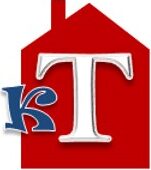Huntsville, Alabama, is experiencing a dynamic shift in its rental market, influenced by seasonal trends, economic growth, and an influx of new residents. Understanding these patterns is crucial for both property owners and renters to navigate the upcoming months effectively.
Spring: Peak Rental Season
From March to May, Huntsville’s rental market typically sees a surge in activity. This period aligns with families relocating before the school year and professionals starting new positions. The increased demand often leads to higher occupancy rates and the opportunity for property owners to command competitive rental prices. It’s also an ideal time for property maintenance and upgrades, as the favorable weather conditions facilitate exterior repairs and landscaping enhancements. (venturehaven.com)
Summer: High Demand for Short-Term Rentals
June through August marks the peak season for short-term rentals in Huntsville. The city’s attractions, such as the U.S. Space & Rocket Center, draw numerous visitors, leading to higher occupancy rates and increased revenue for property owners. For instance, in July, the average occupancy rate for short-term rentals in Alabama reached 68%, indicating robust demand during the summer months. (hello.pricelabs.co)
Fall: Transition to Shoulder Season
September and October represent the shoulder season, where rental demand begins to stabilize. While occupancy rates may decline from the summer peak, the market remains active, offering opportunities for both renters and property owners to adjust strategies. This period is suitable for renters seeking more favorable terms and for property owners to implement dynamic pricing strategies to maintain competitiveness.
Winter: Low Season
November through February is considered the low season for rentals in Huntsville. During this time, occupancy rates typically decrease, and rental prices may adjust accordingly. Property owners might consider offering promotions or flexible lease terms to attract tenants, while renters can benefit from reduced rates and increased availability. However, it’s important to note that Huntsville’s growing population and economic development may mitigate some of the seasonal downturns observed in other markets. (mattcurtisrealestate.com)
Market Dynamics and Future Outlook
Huntsville’s rental market is undergoing significant changes due to rapid population growth and an expanding housing supply. In 2024, the city added approximately 7,000 new apartment units, increasing the existing inventory by 17.4%. This surge has led to a higher vacancy rate and a slight decrease in rental prices. However, as demand continues to grow, especially with federal investments like the relocation of FBI employees to Redstone Arsenal, the market is expected to stabilize, with occupancy rates potentially returning to 90%-93% within the next one to two years. (mattcurtisrealestate.com)
Conclusion
Huntsville’s rental market is characterized by distinct seasonal trends, with spring and summer being the most active periods. Property owners and renters should stay informed about these patterns and the broader economic developments to make strategic decisions in the coming months.
What Type of Property are you Looking for?
